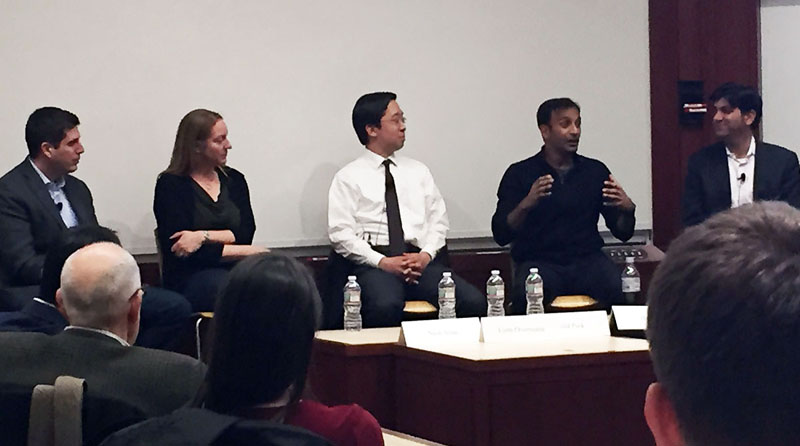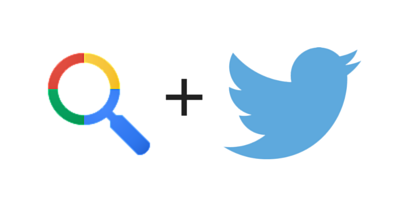Exploring best practices — and unanswered questions — as we navigate social conversation in today’s digital organization

Back in the mid-90s, establishing an institutional web presence began with writing a million dollar check to Oracle. As a next step, you hired a fleet of technical employees, one of whom was called a “Webmaster”—schooled in the dark arts of web servers, ftp, and HTML—and may well have been your first employee to wear a T-shirt to work. A couple of decades, a cloud computing revolution, and an explosion of content publishing software options later, establishing an institutional web presence is less onerous but no less complicated.
Today, an institution is expected to create and nurture presences on major, relevant social media channels, which raise a new question: What are the expectations for an institutional social media presence, and how can these presences understand and interact with the individual social media users within and beyond them?
In order to answer that question, an organization establishing a social presence must first consider a few of the decision points:
- What are our goals, and how will we measure them?
- Which networks does it make sense participate in? Where is our audience?
- How much will each account listen, publish, and interact with audiences? How does this integrate with customer support?
- What’s the associated staffing model and workflow?
- What does governance look like, in terms of people, policy, process and practice? How much control versus how much free-form proliferation of accounts?
- How will the different institutional accounts interrelate, for example between central corporate and business unit, or between business unit and HR? How human or hard-coded are these connections?
Beyond these institutional presence questions, many institutions now have the bulk of their employee base online, which leads to what might be the most difficult question: As social moves beyond the marketing suite, how will the institution interact with the individuals that comprise it—at both the leadership and the staff levels?
For all institutions, the relationship between the institutional and the individual accounts is still forming. Even among co-workers, the rules are still being written. I caution employees that social media is a bell that can’t be unrung—if my Facebook feed shows me an Instagram photo of you out at a party at 3am, it’s difficult to be sympathetic about that report that wasn’t in by noon.
Beyond deadlines, more complex HR questions loom. In addition to spelling errors and beer pong photos, a manager and coworkers may now have knowledge of an employee’s out-of-work conduct, sexual orientation, and political leanings. As what was previously unknown becomes knowable, organizations are rapidly enacting policies to evolve with these challenges.
However, this as much an opportunity as it is a challenge. Recent research shows that employees have on average 10x more social connections than an institution does and content shared by employees receives 8x more engagement than content shared by institutional channels. Employees are clearly an asset, and can act as effective advocates on the institution’s behalf, yet the appropriate balance and process remain uncertain.
We deal with this same question in higher education—but it comes with a twist. The faculty and the students, who provide the research, teaching, and learning that fuel the institution, are not traditional employees. They’re contributing and sharing content related to their diverse disciplines and experience—along with all the other news items, casual observations, and sporadic conversations people share on social media. The sum of the parts, in higher education, is what makes for a successful whole. Most universities see bringing faculty online as consistent with knowledge-sharing part of their charge of the creation, dissemination of knowledge. Younger faculty, particularly in sciences, are sharing more research and inviting more collaboration via social media.
So, what’s an institution to do? First of all, be cognizant of the delicate balance and role that institutions must play in a social setting; no one wants to be interrupted, especially by a brand trying to force its way on stage. The institution can focus on and reflect overarching, shared priorities, and perform an aggregating and amplifying role that highlights local achievements and campaigns. But institutions must also be wary of new privacy and cultural norms emerging with social content. A person authoring a tweet or Instagram post may know, intellectually, that this is a public act. But having an institutional account amplify that message to millions of followers may reveal that there was, after all, an expectation of privacy in networked publics. Institutions must consider the impact of sharing public content intended for a small audience with the broader world.
The one thing that is clear is that institutions cannot ignore this change. Instead, you can take concrete steps to:
- Discover the individuals within your organization who are highly engaged on social. Many social publishing platforms provide tools that enable you to tag individual accounts with relevant attributes. Use these to understand individuals who may be your thought leaders or champions in different disciplines.
- Convene groups of relevant individual users around themes and ideas. If your software company has people already engaged in conversations about cloud computing, how might they be invited to participate/lead the online conversation in your next conference?
- Awaken your marketing and HR departments to the “show, don’t tell” possibilities. If you have engaged employees with active social accounts, think how they fit into current digital campaign and conversation planning.
- Develop norms about what’s a fair ask. We recently saw hundreds of employees from a services firm dutifully post their CEO’s appearance on a television talk show to social channels. This was clearly a broad mandate that yielded a painful, work-to-rule like result. Just as you wouldn’t expect your employees to recite your mission statement at a cocktail party, don’t expect to script their social channels.
- Create a strategy for your “influencer” users who thrive on the social graph—regardless of org chart. Have a new product you are eager to get to market? Consider adding these individuals to an early beta release to get their feedback and support.
Social strategy is nearly a decade old, but it is changing just as quickly as the rest of the business landscape today, and there are still large, blank areas on the ever-changing map. As organizations themselves change, and as the boundaries between organization and public blur, the institutional odyssey will only become more complex—and more exciting.
Originally published to Medium on behalf of the Digital Initiative at Harvard Business School, studying & shaping the digital transformation of the economy.


No comments yet.